Imagine you're a business owner looking for a new telecom service provider for your business communications. You find a particularly interesting, astute article about how data privacy laws are shaping the future of wireless communication.
Download Now: 3 Free Case Study Templates
The blog is hosted by an organization called OutBound Telecom, and you start to think that company might be the right one to suit your needs. The team at OutBound seems to know what they're talking about, but when you go on the company website to get some more information about what they have to offer, you see this displayed front and center:
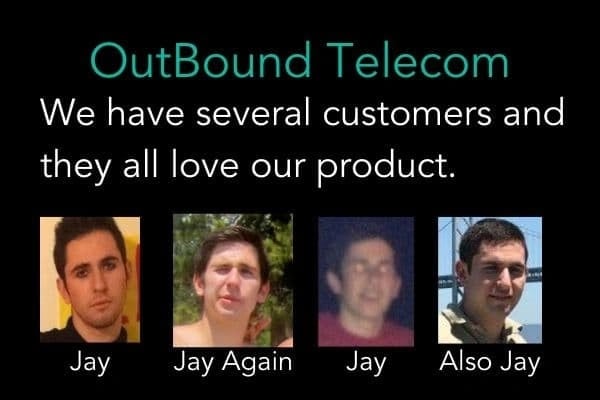
As a potential customer, that graphic throws you off a bit. It's not particularly persuasive, informative, or visually appealing — so much so that it probably undermines your faith in Outbound right off the bat.
That graphic is an example of bad sales content — one of the easiest ways to lose a prospect's trust and interest. Here, we'll learn more about what sales content is, how it differs from marketing content, some of its different forms, and how to do it well.
Sales Content vs. Marketing Content
Marketing content is produced to capture prospects' attention and generate interest. It tends to be more general and practical — like an informative blog post or infographic about an industry-relevant topic. Sales content is more pointed. It's brand or product-specific content designed to compel prospects to buy.
If marketing content "lines them up," sales content "knocks them down." It represents the point where you transition from garnering general interest to explicitly conveying the value of your product or service. You use sales content to show prospects if and why your company suits their business or personal interests.
Where marketing content is backed by astute knowledge about general topics, sales content is backed by facts and statistics specific to your business. It's where you sell potential customers on the experience you offer with hard evidence to support your pitch.
That being said, sales content still has to be compelling in its own right. Good sales content reconciles being informative with being engaging. Prospects need to want to know more about you. You'll have a harder time getting them to do that if they're bored or unimpressed with what you're showing them.
Here are some examples of different kinds of sales content and insight into how to do each one right.
1. Product Comparisons
Product comparisons are an incredibly effective means of establishing the relative value of the products or services you offer. They're a dynamic form of sales content that can demonstrate both the edge you have on your competitors' and the different tiers available within your offering.
A Good Product Comparison
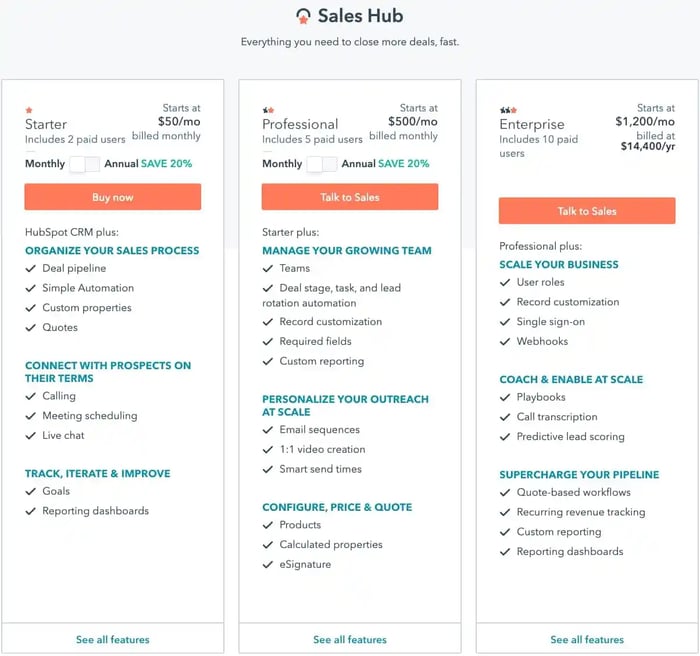
Source: HubSpot
Here's a product comparison for the HubSpot Sales Hub — an example of a product comparison that abides by the form's best practices. It provides a series of clear, well-structured lists that lay out the features of each version of the product available. Visually, it's aesthetically consistent, unobtrusive, and easy to read.
In terms of content, it clearly differentiates each product while still detailing considerable value in its lower-tiered options. It has something to offer each kind of buyer. It also features links to let prospects buy immediately or see more features. It's clean, concise, accessible, and decisive in how it distinguishes its options. All that makes for an excellent product comparison.
A Bad Product Comparison
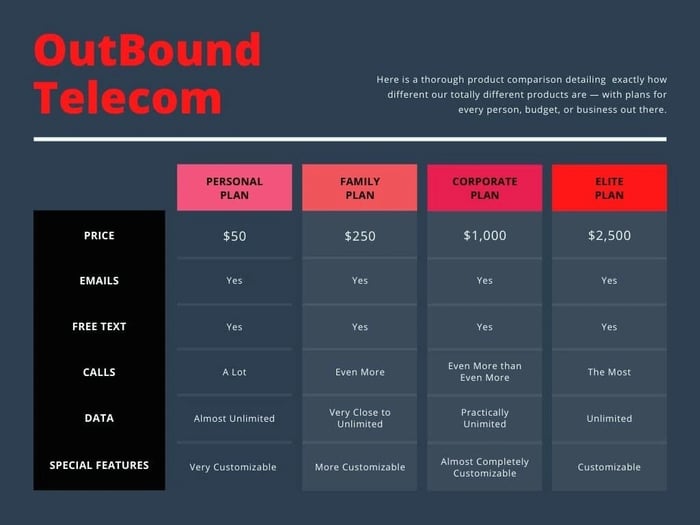
Here, we have OutBound Telecom's product comparison — one that looks at product comparison best practices and says, "No thanks."
It's hastily thrown together — all over the place in terms of aesthetics. The text is difficult to read, and though its format is simple to understand, it comes across as more lazy and rudimentary than deliberately straightforward.
In terms of content, it doesn't do much to differentiate its options. It makes it hard to justify spending $2,500 on the "Elite Plan" when the $50 "Personal Plan" looks almost identical. It also doesn't call out any particularly special features that might make OutBound stand out from the competition. Ultimately, it's not compelling sales content.
2. Case Studies
Case studies are one of the better ways to build trust with and captivate your prospects. They offer an opportunity to show the value and legitimacy of your business — providing concrete evidence that you can deliver results.
A Good Case Study
Here we have HubSpot's case study for Oakland Harley Davidson — an example of well-crafted sales content. Below is a screenshot of an excerpt of the piece.
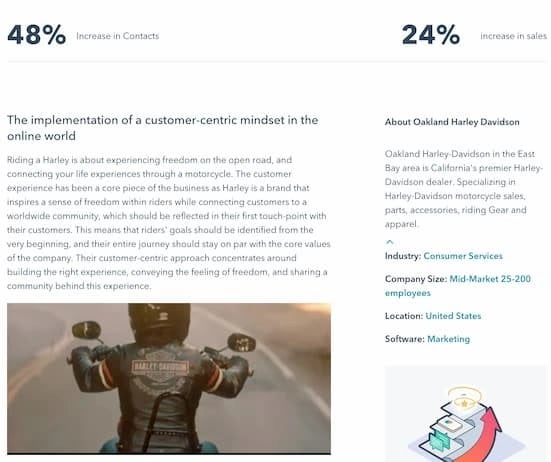
The piece uses dynamic language with a consistent narrative throughout. A case study isn't a press release — it's an opportunity to discuss both a customer's compelling journey and what your company did to facilitate it.
This example reconciles being engaging with being informative. It has the hard results HubSpot gave the business readily visible, but it still tells a vivid story of how they came to be.
It also provides more boilerplate information on the company itself — like its size, location, and industry — so that readers have a reference point to compare their own businesses against.
The content is successful, in large part, because readers can get a lot out of it — no matter how much they engage with it. They don't have to read the whole case study to understand HubSpot's impact on Oakland Harley Davidson.
A Bad Case Study
Here is a not-so-great example of a case study from our friends at OutBound Telecom.
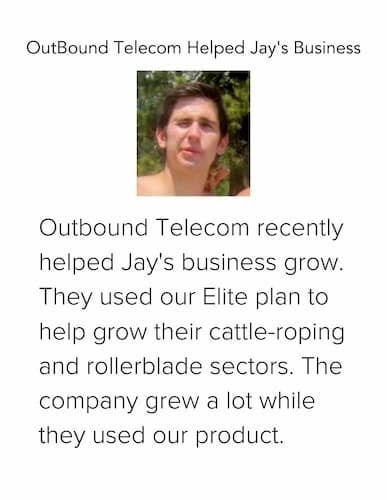
Let's assume this is the start of OutBound's case study, and it keeps this tone and level of urgency as it goes on. There's nothing compelling about it. There's hardly any narrative thread to it — it reads like a shoddy press release. Whatever the customer's journey may have been, OutBound isn't making it seem all that meaningful or interesting.
It also doesn't feature any hard, impressive figures. It just references this vague notion of growth. Plus, it doesn't give any real insight into what this business is or does. There's no mention of its size, industry, or location. It lacks any narrative flair or useful data. In short, it's bad sales content.
3. Personal Testimonials
Personal testimonials are just that — personal. They add a human element to your sales content. They make your product or service seem less rigid or imposing and show that your offering helps people on an individual level — on top of what it can do for their businesses if you sell B2B.
A Good Personal Testimonial
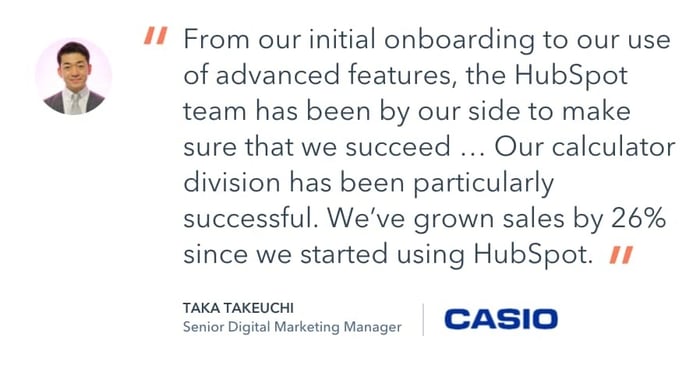
Source: HubSpot
This personal testimonial abides by the form's best practices. Aesthetically, it's clean, clear, and well-arranged. The photo in the corner adds some personality to it without being obtrusive. In terms of the content itself, the quote references a good mix of abstract and concrete benefits — detailing both the value of HubSpot's assistance in both personal and data-backed terms.
It also provides meaningful, impressive insight into who the quote is coming from, what they do, and where they work. With personal testimonials, you want to establish credibility. Be specific about who is getting something out of your product or service.
A Bad Personal Testimonial
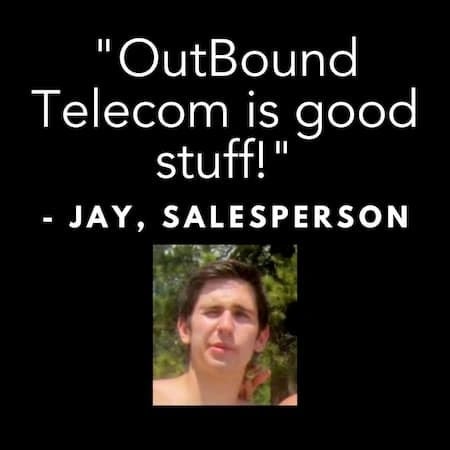
This personal testimonial is less than stellar. Visually, it's jarring, and for a five-word sentence, it's difficult to read. The customer photo also demands more attention than it should. In terms of messaging, the quote itself is too vague. It doesn't show how or to what end OutBound Telecom helped the company in question.
Also, the biographical information on this "Jay" character is too ambiguous. There's no reference to what he really does and who he does it for, so there's hardly any reason to believe that his testimony about OutBound Telecom being "good stuff" is legit.
4. Facts and Figure Graphics
Graphics featuring hard data can be useful to any business looking to demonstrate the efficacy of its product or service. But be careful here. You want to be sure to project impressive figures that convey the trustworthiness of your company and the benefits of your customer experience.
A Good Facts and Figure Graphic
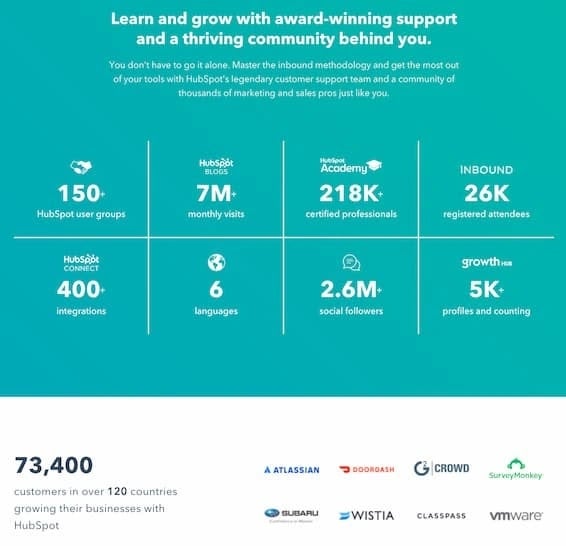
Displaying facts and figures to support sales efforts is a matter of projecting validity. You want prospects to know that people trust your product or service. Highlighting specific, well-defined, attention-grabbing figures about the scope, nature, and legitimacy of your customer base is one of the better ways to do that.
This example raises concrete, impressive figures that demonstrate the scale of the company's influence. It lets prospects know that virtually any kind of business stands to gain a lot from leveraging HubSpot products.
A Bad Facts and Figure Graphic
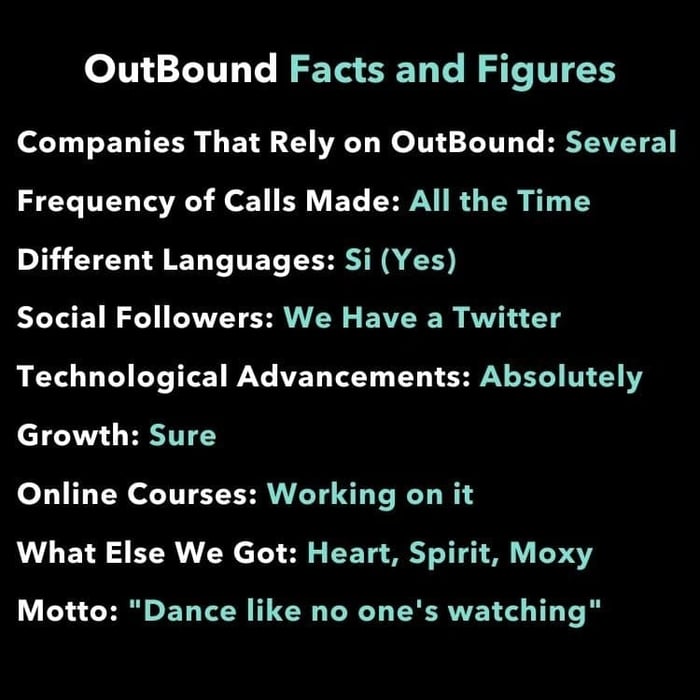
This graphic doesn't do much to build trust between the company and its prospects. There are no specific figures, and even if there were, a lot of the categories listed aren't relevant to OutBound Telecom's customer base.
Prospects who see a graphic like this won't be able to tell whether any other people or organizations actually gain anything from this business. It doesn't foster a sense of legitimacy. It doesn't lead you to believe that anyone actually trusts the company, and in turn, it doesn't drive interest.
This is obviously a pretty extreme example, but the principles and practices of projecting sound facts and figures still apply to it. It's not specific. It's not reassuring. It's not impressive. It's not good sales content.
When all is said and done, the main principle behind creating solid sales content is building trust. You need your prospects to trust both the work you've done for your current customers and the notion that your product or service has the features they need.
To get there, you need to convey the working benefits of your product or service — that amounts to a combination of displaying hard results, touting some bells and whistles, offering insight about your customers, and adding a personal touch.

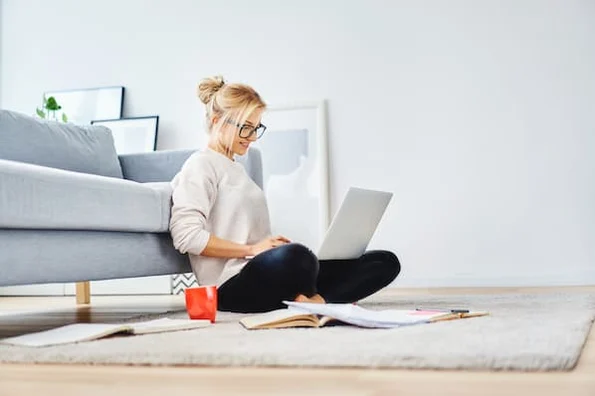

![6 Sales Trends That Could Fizzle This Year [New Data]](https://www.hubspot.com/hubfs/Dead%20Sales%20Trend.png)







